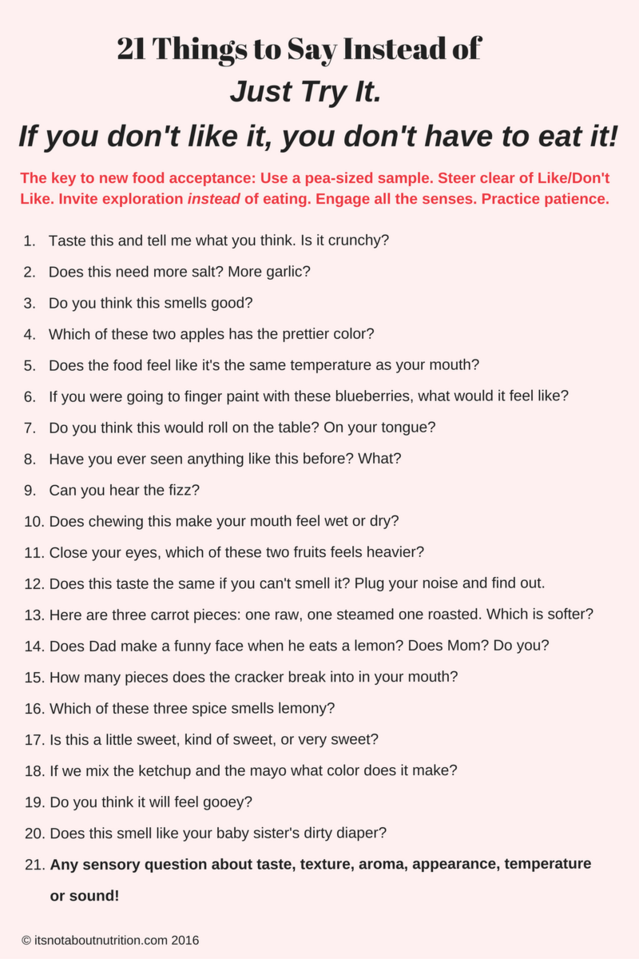
Diet
21 Things to Say to Kids Instead of "Just Try It"
The way parents attempt to convince kids to try new foods easily backfires.
Posted November 16, 2016
"Just try it and if you don't like it, you don't have to eat it" is probably the most common way parents attempt to convince their kids to try new foods. Following closely on its heels is the "No Thank You" bite. Both techniques easily backfire, creating a habit of rejection.
- What parents think when they use the "just try it" approach: If I can just get that tasty morsel into Suzy's mouth she'll see that she likes it.
- What children hear: If I do like it then I'm going to have to eat it. I don't want to eat it. I don't like it.
It's counterintuitive, I know. Sane people, i.e. most adults, assume kids will want to eat food they like. Kids aren't sane. In one tasting study, 23 percent of the children spit out the carrots but 31 percent of the carrot-spitters said they liked the carrots.
Sometimes when kids like, they still spit.
- Here's what parents think when they use the "No Thank You" bite strategy: If I can just get that tasty morsel into Suzy's mouth she'll see that she likes it. And, if not, at least I'll be teaching her good manners.
- What children hear: Mom and Dad don't think I'm going to like this because they said all I have to do is taste it before saying that I don't like it.
The expectation that kids will have to eat a new food interferes with their willingness to explore the new food. Then, the pattern of interaction—parents asking, begging, cajoling, and kids saying they don't like stuff—reinforces a habit of rejection. Most kids will take a bite, but they aren't really open to the experience. Then, every time the interaction occurs, the habit is reinforced even further.
Shift what you're asking your kids to do.
Sensory exploration helps children grow into confident tasters.
- Remove the pressure of having to eat something by completely separating eating from exploring. Do this away from the table if you must.
- Stop asking kids if they like stuff. The answer "no" boxes food into the never-taste-it-again category.
- Broaden beyond taste to include texture, aroma, appearance, temperature and sound.
Sensory exploration works because it helps children make predictions about what a new food will taste like. It's exactly what you do when you're confronted by an unfamiliar dish at a restaurant. You use your experience with food to predict whether or not you'll like it and you use that information to decide whether or not to eat it. Sensory education helps kids make more confident predictions.

~Changing the conversation from nutrition to habits.~
© 2016 Dina Rose, PhD, is the author of the book, It’s Not About the Broccoli: Three Habits to Teach Your Kids for a Lifetime of Healthy Eating (Perigee Books). She also writes the blog It's Not About Nutrition.

